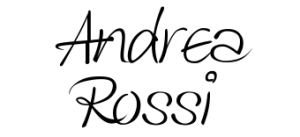Marketing Automation in the Tourism Sector: Transforming Tourism Communication

The advent of marketing automation is redefining the landscape of tourism communication, radically transforming the interaction between destinations, operators, and visitors.
Through innovative automation tools, destinations can now orchestrate each phase of the customer journey with unprecedented precision and personalization.
This technological evolution generates a dual advantage:
on one hand, it optimizes resource allocation and enhances marketing campaign effectiveness,
on the other hand, it allows destination managers to focus on high-value strategic activities.
In a sector where traveler expectations are rapidly evolving, marketing process automation emerges as a key element in building lasting customer relationships and ensuring memorable travel experiences.
Innovation in the Tourism Industry with Marketing Automation
Marketing automation in the tourism sector represents much more than simple communication automation. It’s a strategic and integrated approach that allows industry operators to create a deeper relationship with their customers, responding to their needs and preferences in a timely and effective manner.
This strategic and integrated approach is revolutionizing three key areas of tourism business:
1. Strategic Communication with Tourists
Communication with visitors has evolved thanks to:
- Personalized behavior-based messages: Artificial Intelligence generates content based on specific user actions, increasing engagement and satisfaction
- Contextual communications: Messages are sent at optimal times, identified through predictive behavior analysis
- Advanced audience segmentation: Creating detailed segments allows reaching specific groups with targeted messages
- Coordinated multichannel interactions: Integration of email, social media, push notifications, and SMS creates a coherent communication experience
- Send time optimization: Data analysis identifies the best times to send messages, ensuring higher engagement probability
- Automated personalized follow-ups: Messages maintain a human touch while being automated
2. Advanced Campaign Management
Campaign optimization is based on:
- Data-driven planning: Decisions based on accurate analysis of collected data
- Real-time optimization: Immediate modifications based on results
- Predictive behavior analysis: Anticipating future tourist needs and behaviors, predicting what might interest them and adapting the offer accordingly
- Automated A/B testing: Rapid identification of best-performing versions
- Continuous result measurement: Constantly monitoring campaign performance to optimize and improve results over time
- Advanced reporting: Detailed analysis to understand and improve performance
3. Optimized Customer Journey
The customer journey is improved through:
- Complete tracking: Monitoring the entire visitor journey
- Personalized touchpoints: Meaningful interactions at every travel stage
- Omnichannel experience: Message consistency across all channels
- Needs anticipation: Proactive approach based on predictive analysis
- Contact timing optimization: Identification of best interaction moments
This transformation allows tourism operators to create deeper relationships with customers, respond to their needs in a timely and effective manner, and maximize the value of each interaction through a data-driven and results-oriented approach.
Success Case Studies
1. TravelUp: Marketing Automation for Data-Driven Customer Engagement
The collaboration between TravelUp and RedEye is a recent success case in using marketing automation in the tourism sector. TravelUp’s strategy demonstrated how data-driven automation can improve the effectiveness of personalized communications for travelers.
Key strategy elements:
- Creation of a single customer view: TravelUp integrated data from different touchpoints to obtain an accurate and complete view of their customers, essential for adapting communications based on individual preferences
- Detailed audience segmentation: Through advanced segmentation based on behavior and engagement, the campaign identified new customer segments, developing a tailored plan for each
- Automated but relevant communications: Using behavioral data, TravelUp created automated and personalized campaigns throughout the customer lifecycle, making each interaction meaningful and aligned with user expectations
- Continuous campaign optimization: Automated messages were constantly refined and optimized based on collected data, further increasing communication effectiveness
Results achieved:
- 12% increase in conversion rate
- 22% of revenue generated from behavioral emails
- 300% increase in trigger campaign performance compared to traditional newsletters
Source: https://www.redeye.com/customers/travelup-case-study/
2. Hilton Hotels: Marketing Automation for Guest Communication
In 2023, Hilton Hotels expanded its mobile messaging platform to improve guest experience, enabling direct and automated communication with hotel staff.
Key initiative elements:
- Mobile messaging platform expansion: Hilton extended mobile messaging use to over 7,000 properties globally, allowing guests to communicate directly with staff via the Hilton Honors app, SMS, and WhatsApp
- Automated and personalized communications: Automation facilitated immediate and relevant responses to guest requests, improving efficiency and satisfaction
- Integration with existing systems: The platform integrates with hotel management systems, ensuring guest requests are handled timely and accurately
- Continuous optimization based on feedback: Hilton constantly analyzes guest feedback to refine and improve messaging platform functionality
Results achieved:
- Significant increase in guest engagement: In 2023, 3,618 Hilton properties facilitated over 10.5 million conversations through nearly 70 million messages, with 70% of guests using messaging indicating an improved overall stay experience
- Improved guest satisfaction: The ability to easily communicate with staff led to faster problem resolution and a more personalized experience
- Enhanced operational efficiency: Automation reduced staff workload, allowing them to focus on more complex and value-added interactions
3. Copa Airlines: Communications Optimization through Contact Management
Copa Airlines implemented a marketing automation strategy focused on cleaning contact lists, concentrating on active users to improve communication effectiveness.
Key strategy elements:
- Inactive contact elimination: The company removed non-responsive email addresses from its lists, reducing costs and improving performance metrics
- Advanced email personalization: Using dynamic scripts, Copa automated the insertion of personalized information such as amounts, routes, and dates, making each message highly relevant to the recipient
- Retargeting campaign automation: Automated email series were created to reconnect with users who had abandoned the booking process, encouraging them to complete the purchase
Results achieved:
- Email sending time reduction: Time needed to prepare and send campaigns decreased by 50%, increasing operational efficiency
- Increase in open rate: Emails registered an increase in open rate from 15% to 17%, indicating greater content relevance for users
- Improvement in conversion rate: Conversions increased from 8% to 10%, reflecting the effectiveness of personalized and targeted communications
Source: https://thecmo.com/marketing-automation/marketing-automation-case-study/
Practical Implementation of Marketing Automation in Tourism Industry
To effectively implement marketing automation in tourism, it’s essential to follow some successful strategies that can guide destinations and operators toward optimal use of available resources.
1. Goal Definition
- Identify specific KPIs: Define clear performance indicators to measure campaign success and ensure achievement of set objectives
- Establish measurable targets: Define concrete and realistic objectives that can guide the entire campaign, keeping all team members focused on results to achieve
- Align objectives with overall strategy: Ensure marketing automation objectives align with the organization’s overall vision to maximize business impact
- Plan achievable milestones: Break down the project into phases, each with specific objectives and milestones to reach, to monitor progress and keep the project under control
2. Audience Segmentation
- Behavioral data analysis: Understanding how users interact with the site and content is fundamental for creating effective campaigns
- Buyer persona creation: Identifying different visitor profiles allows creating personalized messages that resonate with each specific segment
- Trigger points identification: Understanding key moments that lead to conversion allows targeted intervention and increases success probability
- Message personalization by segment: Creating communications relevant to each segment increases the likelihood of obtaining a positive response
3. Content Development
- Dynamic content creation: Content must adapt to user preferences and behavior, always offering something relevant and interesting
- Customer journey planning: Defining the user journey and which content to propose at each phase allows accompanying the tourist at every moment, improving overall experience
- Touchpoint definition: Establishing where and how to contact the user is crucial for maximizing campaign effectiveness
- Continuous testing and optimization: Measuring content effectiveness and constantly improving allows maintaining high campaign performance
Challenges and Opportunities in Tourism Marketing Automation
Main Challenges
- Data Management: Integration of different sources and privacy compliance are crucial aspects. Tourist destinations must find a balance between collecting detailed visitor data and protecting their privacy, complying with regulations like GDPR.
- Technical Skills: The skills gap represents a significant obstacle. Investing in continuous training and professional development of the team is essential to address this challenge and ensure effective use of marketing automation tools.
- Technological Integration: System compatibility, solution scalability, and implementation costs are issues that need careful consideration. It’s crucial to plan integration accurately to avoid future problems and ensure that adopted solutions are truly effective.
Emerging Opportunities
- Advanced Personalization: Automation enables optimized customer journeys, with tailored experiences and real-time recommendations that improve visitor experience and increase conversions.
- Intelligent Automation: With advanced chatbots, automated email marketing, and social media management, automation is becoming increasingly smart, capable of handling complex interactions and offering personalized support at any time.
- Advanced Analytics: Big data analysis offers the opportunity to better understand visitor behaviors and optimize marketing strategies accordingly. This analytical capability allows for rapid adaptation to market changes and response to emerging customer needs.
Conclusions
Marketing automation in the tourism sector is rapidly evolving, offering unprecedented opportunities to improve operational efficiency, increase campaign ROI, and personalize customer experience. Tourism destinations and operators who can embrace this digital transformation while keeping customer needs at the center will be the ones to thrive in tourism’s digital era.
Key Recommendations
- Start Gradually: Begin with pilot projects to test solutions and learn from mistakes, ensuring sustainable growth.
- Invest in People: Continuous staff training is essential to develop skills and promote a culture of innovation within the organization, improving the tourism plan.
- Maintain Customer Focus: Personalize every interaction, ensure that each communication provides value, and constantly gather feedback to improve visitor experience, increasing the effectiveness of destination marketing.
Success in implementing tourism marketing automation depends on the ability to balance technology and human touch, creating memorable experiences for visitors while optimizing marketing operations. Destinations that successfully integrate these strategies will see increased competitiveness and will be able to offer more engaging and personalized tourism experiences.
In this context, the role of destination managers becomes crucial: it’s not just about adopting new technologies but about being true experience orchestrators, capable of integrating digital and human elements to create high-quality tourism that leaves a positive and lasting impact on visitors.
.
***
Continue Exploring Innovation and Technology in Tourism!
If you want to dive deeper into innovation in tourism, I invite you to read my book: Andrea Rossi, “Digital Media and Tourism” (English Edition), 2024.
Available on Amazon worldwide!
Get your copy at:
- US -Amazon.com: https://www.amazon.com/dp/B0D1P49JNB/
- UK – Amazon.co.uk: https://www.amazon.co.uk/dp/B0D1P49JNB/
- IT – Amazon.it: https://www.amazon.it/dp/B0D1P49JNB/
- DE – Amazon.de: https://www.amazon.de/dp/B0D1P49JNB/
- ES – Amazon.es: https://www.amazon.es/dp/B0D1P49JNB/
- FR – Amazon.fr: https://www.amazon.fr/dp/B0D1P49JNB/
- NL – Amazon.nl: https://www.amazon.nl/dp/B0D1P49JNB/
.
Image: Young couple planning vacation trip and searching information or booking hotel on a smart phone by kitzstockerer
***
Sources:
https://ipa.co.uk/knowledge/case-studies/expedia-travel-yourself-interesting/
https://dotdigital.com/case-studies/icelolly/
https://thecmo.com/marketing-automation/marketing-automation-case-study/

Leave a Reply
Want to join the discussion?Feel free to contribute!